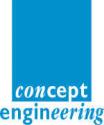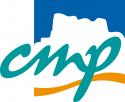W01 VLSI for IoT
Agenda
| Time | Label | Session |
|---|---|---|
| 08:30 | W01.1 | Devices and Systems VLSI design - low power sensing and computation, wireless communication - defines the properties of IoT node devices. This session sets the stage for the day's discussion of VLSI for IoT. The first talk outlines how low power and low cost devices will influence the network architectures of IoT systems. The second talk proposes a fog-based paradigm for the IoT systems. |
| 08:30 | W01.1.1 | Small Is Beautiful: The New VLSI Landscape Marilyn Wolf, Georgia Institute of Technology, US IoT requires small, capable devices. VLSI system design has traditionally pushed toward ever-bigger chips. IoT will require us to rethink our assumptions and develop new methods to design chips that are small, consume extremely low power levels, and provide the capabilities appropriate for the systems in which they opeate. |
| 09:30 | W01.1.2 | Towards a Fog Computing Paradigm for Industrial Internet of Things Paul Pop, Technical University of Denmark, DK This talk proposes a distributed fog architecture for industrial IoT:
|
| 10:30 | W01.2 | Architectures and Applications This session looks at the architecture of IoT nodes and the characteristics of IoT applications. Hardware/software co-design techniques are well-suited to the design of low-power IoT nodes. Energy-oriented applications---smart grids and electric vehicles---offer key applications for IoT systems. |
| 10:30 | W01.2.1 | Customizable Processor Acceleration of Time Series Similarity Search for the Internet of Things Philip Brisk, University of California, Riverside, US IoT nodes must both capture and analyze sensor data. This talk discusses the design of customizable processors for similarity search on sampled data. |
| 11:15 | W01.2.2 | Smart Data vs Big Data in Manufacturing IoT Sujit Rokka Chhetri, UC Irvine, US IoT systems for manufacturing. |
| 14:15 | W01.3 | Circuits and Systems Novel circuits enable new IoT applications. This session looks at two system designs for novel applications: personal health monitoring and neural-inspired image processing. |
| 14:15 | W01.3.1 | Toward Smart Wearable Systems for Personal Health Monitoring Yu Cao, Arizona State University, US Ultra-low power devices for personal health. |
| 13:30 | W01.3.2 | Ultra-Low Power Neural Image Processing Saibal Mukhopadhyay, Georgia Institute of Technology, US Neuromorphic circuits for ultra-low power image processing. |
| 15:00 | W01.4 | SoC Design around ARM Cortex-M0 for Energy-efficient IoT Applications Organisers: This talk explores various areas of IoT in the context of existing technologies and discusses features of the ARM Cortex-M family of CPUs suitable for applications interesting to IoT. The talk will be followed by a demo on prototyping an IoT application built on the framework of the SoC Design Education Kit from ARM University Program using the energy-efficient ARM Cortex-M0 DesignStart IP core. |
| 15:00 | W01.4.1 | SoC Design around ARM Cortex-M0 for Energy-efficient IoT Applications: Techniqwues Victor Nelson, Auburn University, US This talk describes the range of features of the ARM ecosystem that enable IoT. |
| 15:30 | W01.4.2 | SoC Design around ARM Cortex-M0 for Energy-efficient IoT Applications: Demonstrations Victor Nelson, Auburn University, US A demonstration of the capabilities of ARM systems for IoT applications. |
| 16:45 | W01.5 | Participant Presentations and Discussions Presentations from workshop participants and group discussion of workshop topics. |





